Different Kinds Of Asparagus Varieties & Cultivar Types
The most common types of asparagus are purple, white, green, wild. But it is not limited to these. There are hundreds of hybrids and cultivars that fall under one of these four varieties.
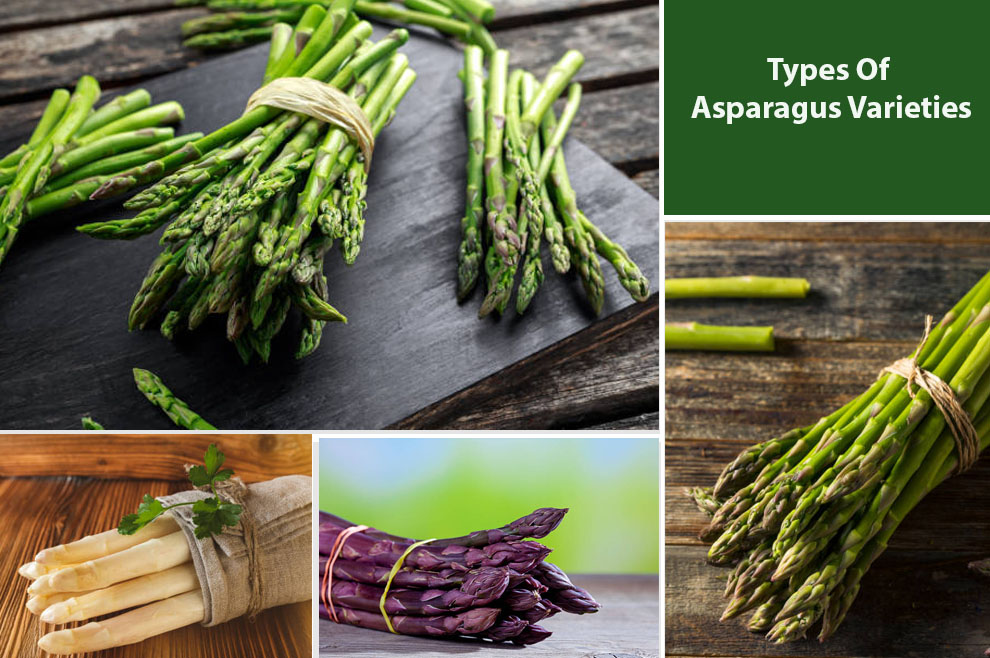
Asparagus is a perennial vegetable and belongs to the perennial flowering plant species. You can cultivate its young shoots, prevalent as a springtime vegetable, to be purple, white, or green. It is a distant cousin of onion, earlier classified as part of the Liliaceae or Lily family. Today, Asparagus has been reclassified and belong to the Asparagaceae angiosperm family.
Originating in West Asia, North Africa, and Europe some two thousand years ago, it is one of the easiest to grow vegetables. There are over three hundred different kinds of Asparagus that can be categorized under white, green, purple, and wild asparagus. Hence, most amateurs and even experienced gardening lovers consider planting asparagus.
It is also widely used in several food dishes. Earlier regarded as a delicacy, Asparagus today primarily makes for an excellent side dish or appetizer in most meals.
Often referred to as the sparrow grass, almost all the varieties develop naturally in Mediterranean climates and temperate & sandy soils. Fortunately or unfortunately, there is a multitude of Asparagus varieties that you can choose to grow.
However, some are easier to get hold of or grow, while others are suited to specific climates. You will also find some taste differences between the different types. Thus, there will be some varieties that appeal to specific tastebuds. Below, we will discuss the different types of Asparagus that are most popular.
Prevalent Varieties of Asparagus
You can find several varieties of asparagus with different textures, tastes, colors, and hardiness. Primarily, asparagus can be categorized as – wild, purple, white, and green.
The remaining varieties are specialty cultivars that fall under one of the four basic categories. Some Asparagus plants can live for three decades, making them one of the most preferred vegetables for any garden.
However, a few varieties are planted mainly for aesthetics and should not be consumed because they are toxic.
Different Types Of Asparagus Cultivars and True Varieties
Listed below are the asparagus types you will most commonly find.
1. Purple Asparagus
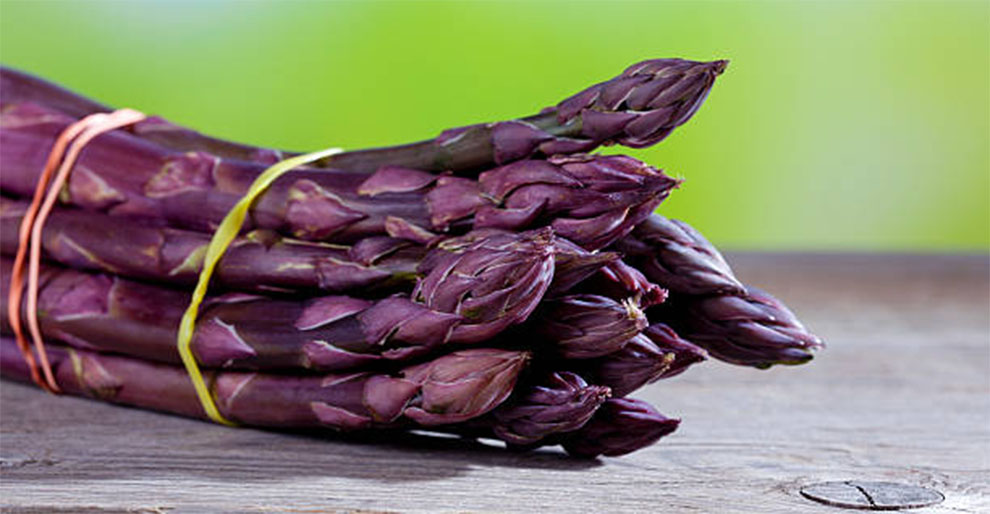
Originally from the Liguria region in Italy, Purple Asparagus is now grown in different countries. It is different not only because of its color but also because of its content.
It has a high anthocyanin level, an antioxidant that lends it its purple color. It is a tender Asparagus, much more than its green or white counterparts, primarily because of its low fiber content.
Purple Asparagus has a mild flavor. Moreover, since it has more sugar than other Asparagus varieties, it is a little more on the sweeter side. Upon cooking, it loses its color and looks like a mix of almonds and artichokes.
Their stalk thickness is variable, and the thicker ones are more fibrous, meaty, and woody. The thinner stalk varieties are crunchier.
2. Green Asparagus
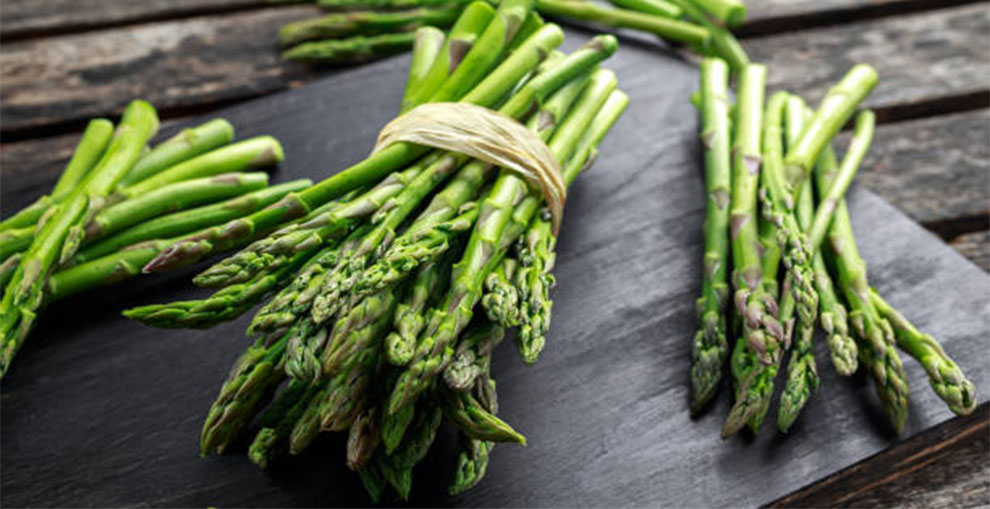
It is the variety most commonly seen in the local grocery store and veggie patches. It is also one of the cheapest varieties. Green Asparagus gets its green color from chlorophyll, a pigment responsible for the green color in plants. Upon cooking, it only gets brighter.
These types of Asparagus poke through the early spring soil, absorb sunlight from the sun, and yield good produce. It has a grassy flavor, best enjoyed with a hint of lemon. It is quick and easy to prepare and is thinner than other Asparagus types.
Green Asparagus is the most nutritious variety. It is a rich source of calcium, vitamins C and B, folic acid, beta-carotene, and fiber.
3. White Asparagus
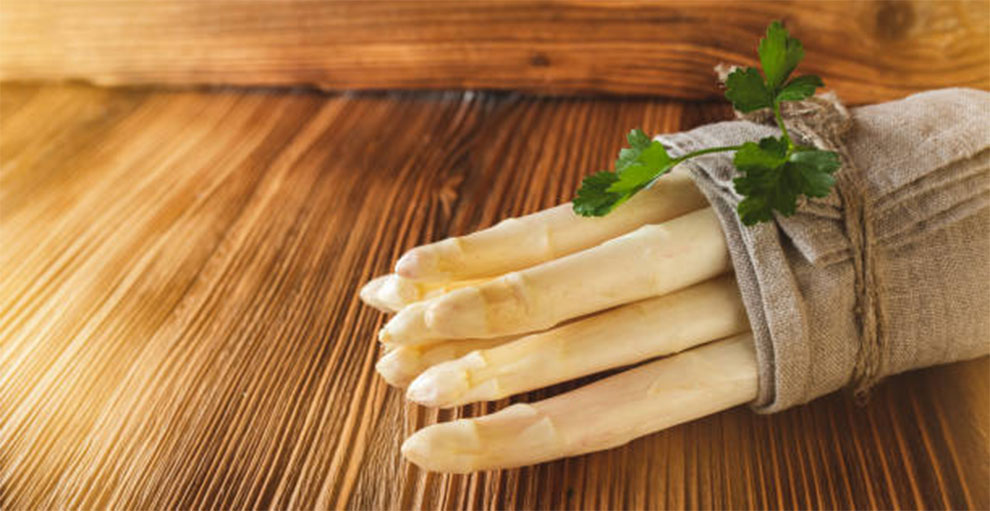
The White Asparagus is more like a bleached version of the green Asparagus. Both these Asparagus varieties have a similar taste, shape, and size. Their nutritional value is almost the same too.
Hence, the only difference between these two is in their color. Since it grows underground, chlorophyll (color-producing pigment) never develops. Thus, the stalks remain white.
Many experts recommend mixing the different asparagus in their gardens and dishes to create a more visually appealing outcome. But white Asparagus does not prefer bright sunlight and thrives in totally dark to dim conditions.
Farmers tend to cover the white Asparagus with black plastic or thick dirt mounds to ensure no sunlight reaches the spears. It is known as etiolation. These Asparagus varieties are prevalent in Europe but are grown in large quantities in Germany and France.
They have a delicate and somewhat milder flavor and are slightly bitter with a hint of sweetness. Its spears are more fibrous and thicker than the green Asparagus.
People in Europe enjoy it after giving it a good simmer and drizzling it with melted butter or dipping it into the hollandaise sauce.
4. Wild Asparagus
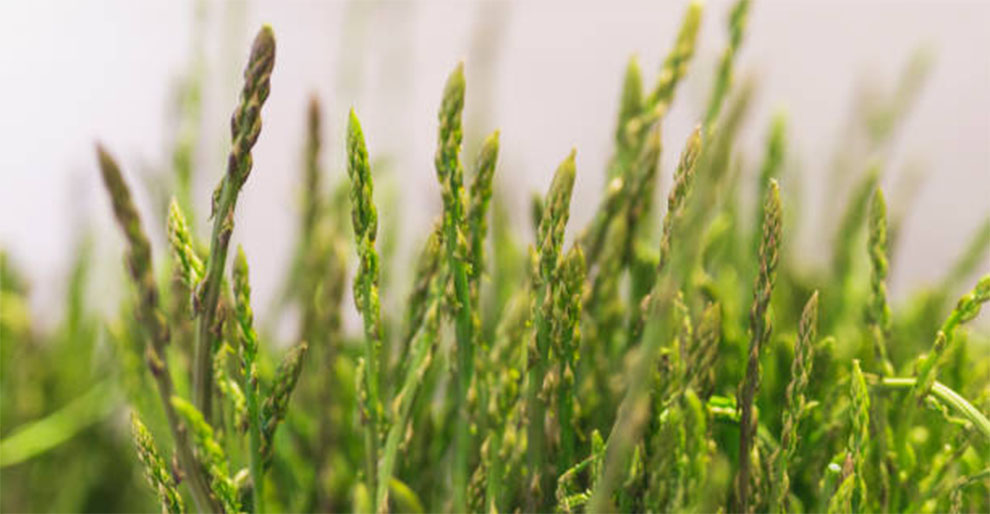
As is apparent, it is found in the wild and is less productive than the above-listed three types of Asparagus. It has a natural taste as it lacks the high antioxidant and sugar content prevalent in other cultivated kinds.
Also called the Asparagus acutifolius, Wild Asparagus is longer and thinner than others. You will see its spears earlier in the season – usually in April. It is an evergreen perennial plant that is endemic to Western Europe.
Its shoots are its primary edible part. Folk medicine employs it as a diuretic for treating kidney disorders. It is cooked in various dishes, but you can eat it with eggs (in poached or scrambled eggs or omelets).
5. Erasmus Asparagus
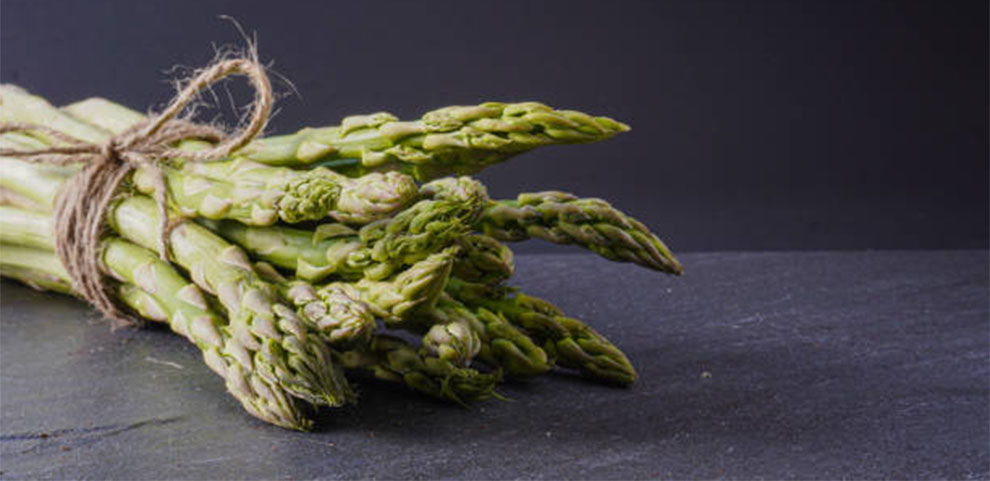
These are all-male purple Asparagus varieties with a sweet taste. Surprisingly, they are the world’s first 100 percent male variety. Known for its beautiful color, the Erasmus Asparagus tends to yield multiple spears.
It is hardy in USDA zones three through ten and can tolerate cold up to -40 degrees Fahrenheit. You will primarily find them as seeds, not crowns. Because of their tender texture, you can serve them in appetizers or salads.
Alternatively, you can relish it raw or stir-fried. Erasmus Asparagus requires full sun to thrive.
6. Atlas Asparagus
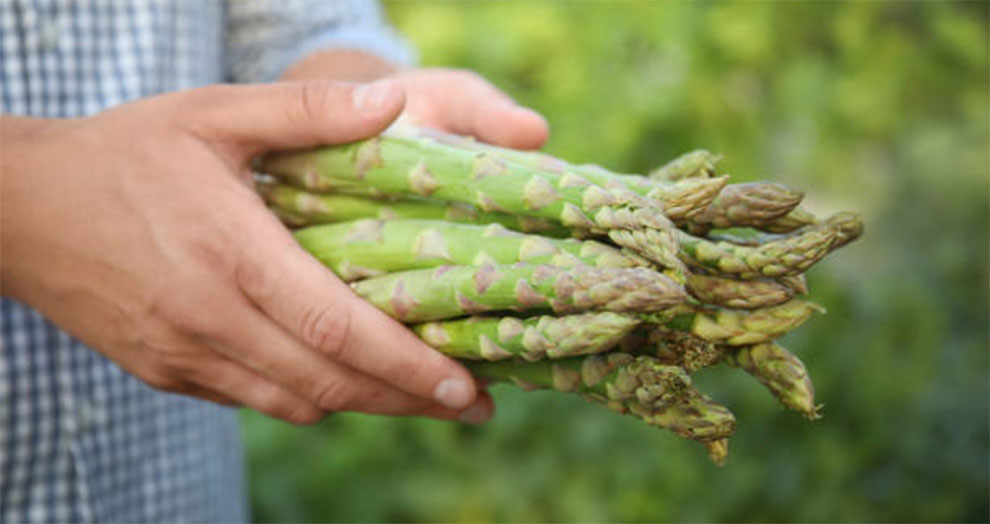
Among the different kinds of Asparagus, it is one hybrid variety that yields large, dark green spears. It is Fusarium-resistant, a prevalent fungi genus responsible for causing diseases in different plants, especially Asparagus.
Atlas’ Fusarium-resistant makes it a popular choice amongst home cultivators, especially those new to gardening and growing Asparagus.
Beyond this, this variety also has other strengths. It is hardy and drought-tolerant. Moreover, it has a delicious taste. You can grill it and enjoy it with apricot and pine nut romesco.
7. Apollo Asparagus
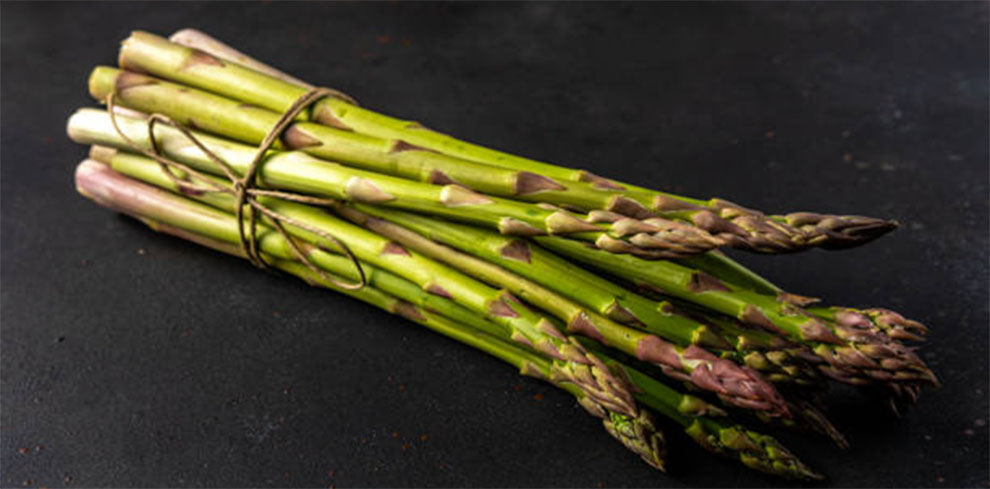
It is a green Asparagus kind. It can be an interesting pick if you seek a variety that blooms earlier than the different varieties of Asparagus. It has medium to large stalks with a tint of purple on the tips. It has a smooth appearance and stalks.
Apollo Asparagus is green in color and thrives best in cold and warm climates. It is resistant to diseases and pests, such as fusarium and rust, and is ideal for multiple purposes, such as serving fresh, freezing, and processing. Since it freezes well, you can stock it up for the rest of the year.
Popular Cultivars of Asparagus
1. Mary Washington Asparagus
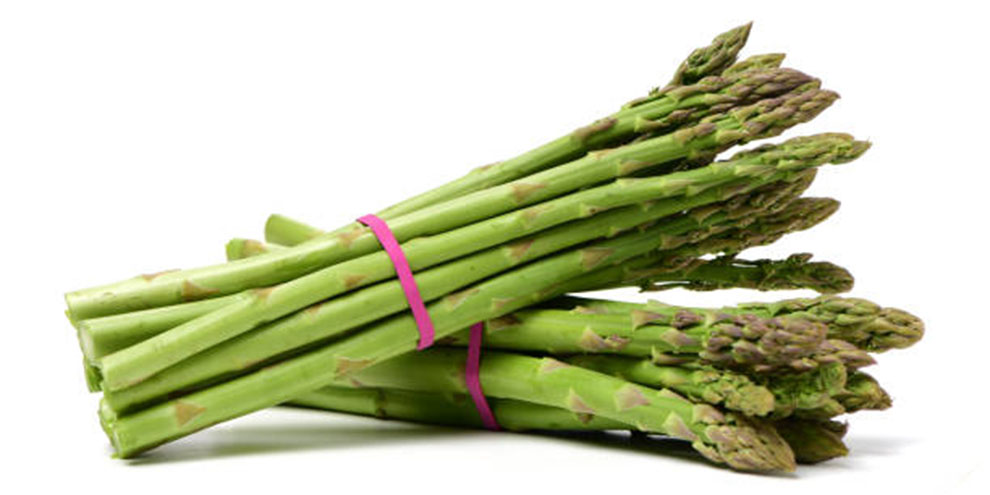
Mary Washington is an heirloom variety with a high ornamental value. It has been around for over a century and is an incredibly popular Asparagus in America.
A primary reason for its vast popularity is its tolerance to different growing conditions. It is also renowned for its deep-green spears with a hint of light purple and a delicious flavor.
Mary Washington Asparagus is a traditional Asparagus that grows uniformly and long. It is a perennial plant that grows in USDA hardiness zones three through eight. These Asparagus cultivars have attractive foliage has a feathery green color.
This Asparagus roughly gets to eight inches, but the plant can grow up to seven feet tall. You can grow them in partial shade or full sun. It needs around six to eight hours of full sun every day.
2. Precoce D’Argenteuil Asparagus
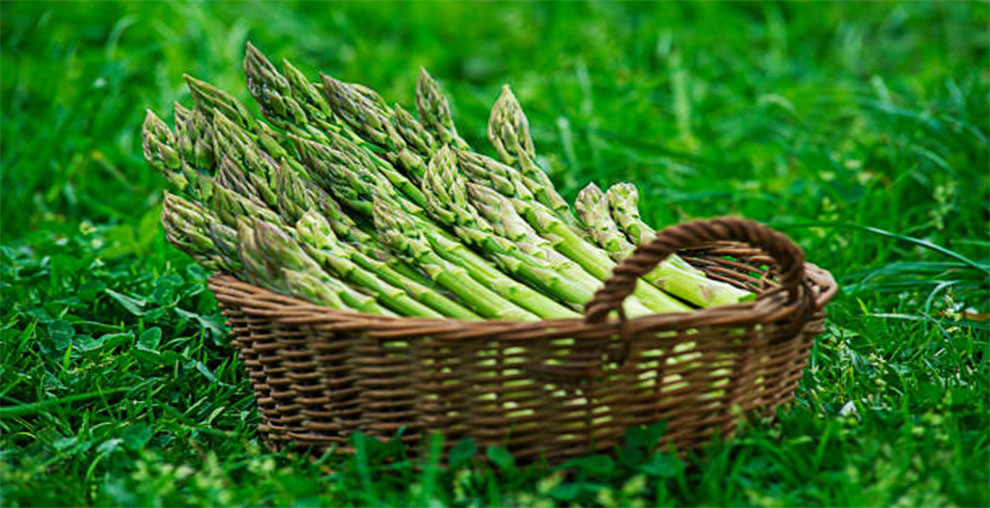
It originated in Europe, where it is hugely popular. You will find it more frequently in gourmet restaurants, where it is a commonality in salads. It is another one of the heirloom Asparagus cultivars with a sweet taste.
It is light green with a touch of pale pink across its stalk. Its rosy pink tips also add to its visual appeal. It is an early bloomer and thrives in its second year. Precoce D’Argenteuil enjoys full sun that grows best in USDA hardiness zones five through eight and can grow up to three feet tall.
3. Viking KB3 Asparagus
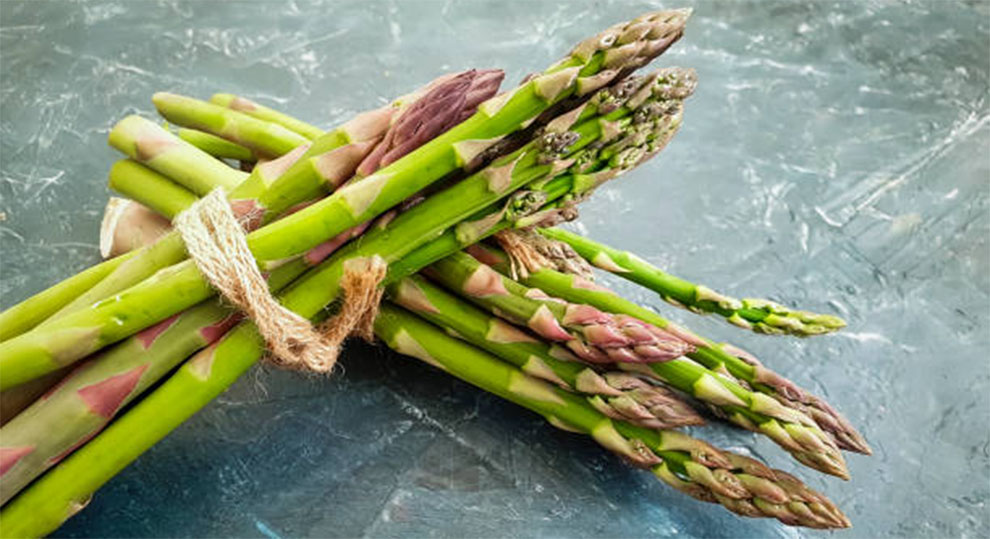
It is one of the newer Asparagus varieties that combine female and male plants. Viking KB3 is a sturdy plant known to yield large crops. In addition, it is versatile and has a delicious taste. You can grow it in almost all kinds of climates.
It is harvested early. So, you can cultivate it once its stalks become pencil-thin. Its stalks grow up to approximately 10 inches and are delicious and meaty. It is a type of Mary Washington Asparagus and is easy to grow.
4. UC 157
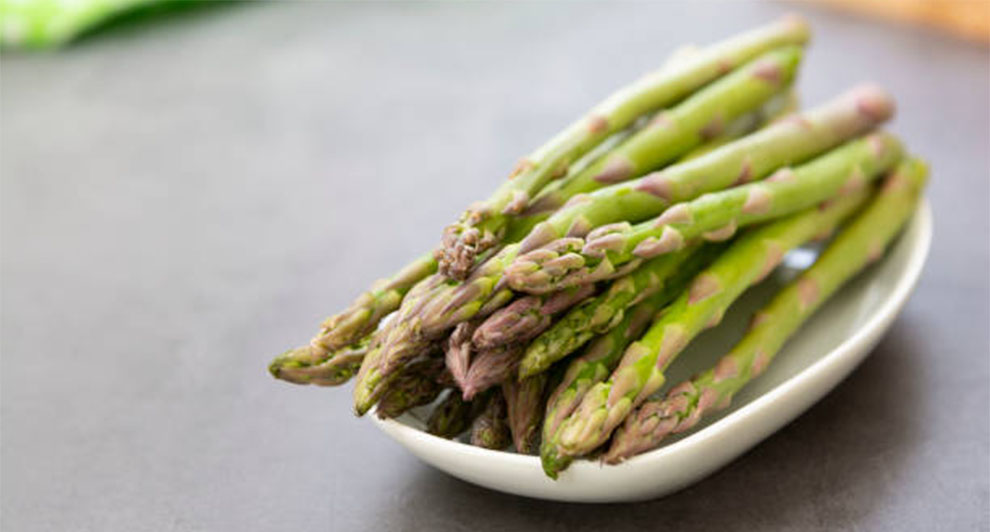
It is a newer hybrid and a product of many years of scientific research. UC 157 received instant acclaim, mainly because of its disease-resistant ability. You can grow this hybrid in several zones, courtesy of its warm and cold weather tolerance.
So, whether you are a commercial grower or a hobbyist gardener, this can be an excellent choice to grow. The majority of Asparagus in the market is from this hybrid today.
Upon maturity, UC 157 has light green spears when they are ready to harvest. It has a mild flavor, not very sweet. It tastes better when cooked, but people also like it in salads.
5. Jersey Series Asparagus
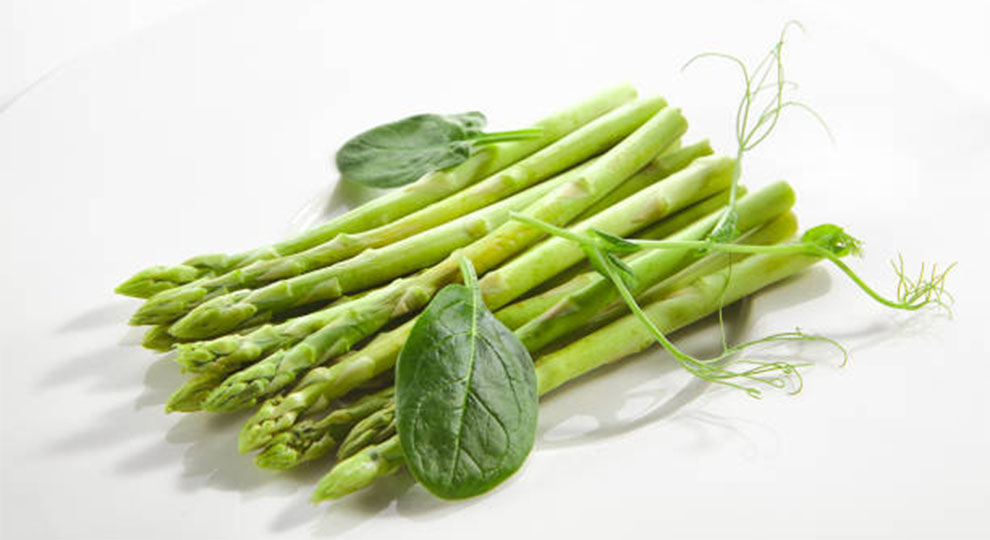
Jersey series comprises three different types of Asparagus – The Jersey Supreme, the Jersey Knight, and the Jersey Giant. It is a hybrid, comprising all male parts.
A. Jersey Supreme
It is the newest entrant in the Jersey Series and is resistant to diseases like fusarium and rust. You can consider growing this if you have sandy soil. The plant does best in USDA hardiness zones three through eight. It yields faster than Jersey Knight or Giant. The older it gets, the more stalks it produces.
B. Jersey Knight
It is a sturdy and hardy variety, resistant to almost all kinds of pests and diseases, such as rust, crown rot, and fusarium. You can grow it in hot and cold climates, but it thrives in USDA hardiness zones three through ten. It is a rich source of vitamins C, B6, and A.
C. Jersey Giant
It is a small plant that grows between seven to nine inches with a thick stalk, giving it an intense and meaty taste over the other varieties. It is this specialty that gets it the name Jersey Giant.
You can grow it in almost all climates, but it does best in USDA hardiness zones four through six. These plants mature in late spring and yield several stalks.
Male Vs. Female Asparagus
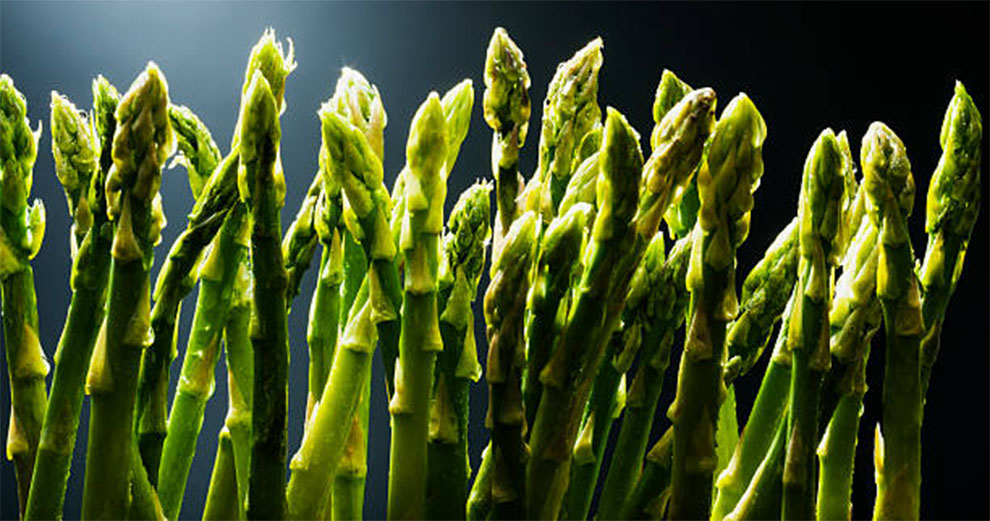
Since Asparagus is a dioicous specie, it has female and male plants. As is prevalent, the female counterparts yield seeds, which the males pollinate. Beyond this, there exist subtle differences between the two. These are:
- Male produces thicker and longer Asparagus spears. They also have longer and larger flowers with one pistil and six stamens. Jersey Knight is a male Asparagus.
- Female Asparagus are smaller, with three-lobed stamens and six pistils. They produce seeds that develop into red berries after pollination. Mary Washington Asparagus is a female Asparagus.
Related: How long does it take to grow asparagus from seed| How to care for asparagus fern indoors | Best asparagus fertilizers
Frequently Asked Questions
Ques 1. What is the most common among the different types of Asparagus?
Ans. Green Asparagus is the most common Asparagus. Mary Washington is one of the most prevalent ones from the category of green Asparagus.
Ques 2. What is the best variety of Asparagus?
Ans. We cannot pinpoint a particular variety of Asparagus that’s best because it is a subjective opinion. But, there are some kinds that are disease and pest-resistant. They are versatile Asparagus and can grow in hot and cold weather, which can be a better pick over the rest. Some examples include Viking KB3 Asparagus, Jersey Series Asparagus, Atlas Asparagus, etc.
Ques 3. Can I plant different varieties of Asparagus together?
Ans. Yes, you can. It adds color and visual appeal to the garden.
Ques 4. Do Asparagus spread?
Ans. As the Asparagus matures, it spreads. Typically, after planting the asparagus roots, they spread up to six feet underground, and the ferns can spread up to three feet above the ground.
Ques 5. Which are some of the thin Asparagus varieties?
Ans. Pencil Asparagus is the thin Asparagus variety. These are cultivated for their tender and thin spears.
Summing Up
There are 100s of Asparagus kinds to select from, with diversity in taste, thickness, colors, and asparagus harvest time. Some do well in certain time zones, while others may not. So, depending on where you live, you can make your selection. Regardless asparagus are easy to grow and require little care. Moreover, they yield for several years.
